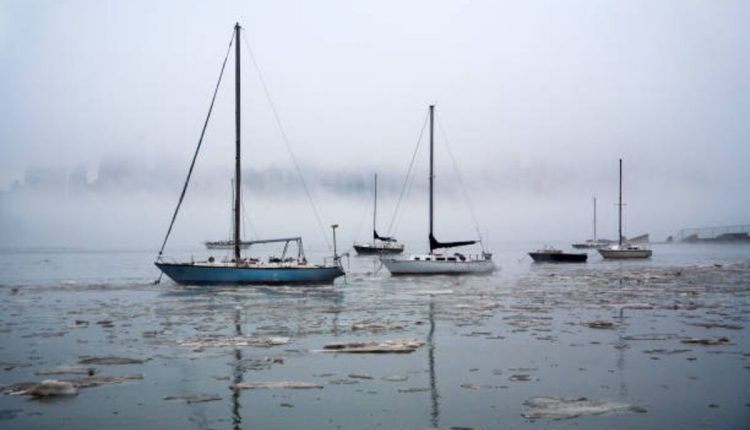Ice Sailing on the Hudson River
Ice sailing on the Hudson River has long been a beloved pastime, starting as a means of transporting sheep and people over its expanse of ice-coated banks.
Light-frame craft on cast iron runners powered by traditional gaff rigs can reach speeds of 75 miles an hour, even in modest winds.
Safety
Owing to their speed, accidents can still happen on these ice boats. Although common sense and obeying Right-of-Way rules will usually keep most people safe, you should remain mindful that sailing is a hazardous sport and serious injuries could arise; an approved helmet must always be worn when sailing on ice.
Early 1800, Hudson Valley residents took to the frozen Hudson for winter entertainment that quickly evolved into an exhilarating and popular pastime known as ice yachting. Light-frame boats without traditional hulls were equipped with cast iron skates for racing up and down the Hudson at speeds exceeding 75 miles per hour.
Hudson River Ice Yacht Club revived this tradition when conditions permitted, organizing an assortment of old (some over 100 years old) and new ice boats to revive a dying sport. See video footage from 2014 showing these vessels at work!
Skillful navigation at high speeds requires both skill and knowledge, with even minor errors being potentially disastrous. Due to their speed, ice yachts multiply their impact upon anything they encounter – cracks in the ice could send it flying off course into freezing waters below, or colliding with another craft could prove fatal.
Equipment
While larger ice yachts continue to be produced and raced, new generations of enthusiasts have discovered smaller, sleeker boats known as “Skeeters,” which are easier to construct and more cost-effective – often out-performing their larger brethren during regattas. They’re known by this moniker, with the International Skeeter Association taking credit for reinvigorating this sport.
Boats can be navigated by turning the tiller at the stern, though tacking and jibing may also be employed to turn the ship. Sailors must abide by all ROW (Right of Way) regulations for safe navigation of their vessel.
Rules designed to protect sailors are in place to make sure that they do not get injured, trip over, or die during racing events, but all ice sailors should familiarize themselves with them.
Ice sailing can be a dangerous sport, yet most conditions in winter remain well-covered, and sailors take great care not to damage it. Despite global warming, the Hudson River still freezes over during the winter season; when conditions permit, a group of men and women gather to sail these magnificent machines reminiscent of 19th-century tradition when thousands would gather at Poughkeepsie ice floes to watch these competitions unfold before them. Photographers capture images of them competing while spectators marvel at living tableaus from another age.
Preparation
Ice sailors must don warm clothing and a helmet not only for comfort but also to protect their head and neck in case they fall from their boat. Good ice conditions for sailing are not always easy: boats should ideally rest on a solid sheet at least one foot thick without cracks or open water; no snow should accumulate either since snow prevents new growth of ice.
The ice must also be clean and clear of debris like branches and trash that could puncture its hull and break it. Finally, river inlets and outlets should also be avoided since these could break up the ice into dangerous holes that must remain intact to support operations safely.
Ice yachting, also known as sailing on frozen lakes and rivers, began in the early 1800s as an innovative method for people to transport goods across rigid bodies of water. Dutch entrepreneurs soon turned this hobby into a profitable business venture using wooden-hulled working boats equipped with runners attached to their bottoms – they even organized race events to test out this approach!
Soon, sportsmen were drawn in by the thrill of speed and competition, building unique ice boats tailored explicitly for this form of sailing. Today, this global trend continues as races take place worldwide.
Rules of the Road
As with any recreational activity, sailing presents some risks. A person could fall from their boat and be seriously injured or slip through the ice into cold water. To minimize these risks, it is vital to have the appropriate equipment and knowledge on how to sail correctly; furthermore, it would be prudent to have a partner and plan in case something goes amiss, as well as wear appropriate winter clothing to stay warm against wind and sun exposure.
Before sailing, one should check the condition of the ice. For optimal sailing conditions, thick solid ice without cracks should be at least six inches wide; river inlets, outlet channels, and open waters should not be considered sailing areas. People should look out for signs of weakness, such as holes, pressure cracks, heaves, or watery spots, which could indicate weakness or rot in the ice.
Ice sailing has long been a beloved pastime of life in the Hudson Valley. At first, it served as an efficient means of transportation on frozen rivers, lakes, and bays; then, during the 19th century, wealthy residents took up this form of transportation using light frame boats with traditional sails attached to cast iron skates or runners known as ice yachts – some were capable of outpacing trains traveling up and down the Hudson River!

